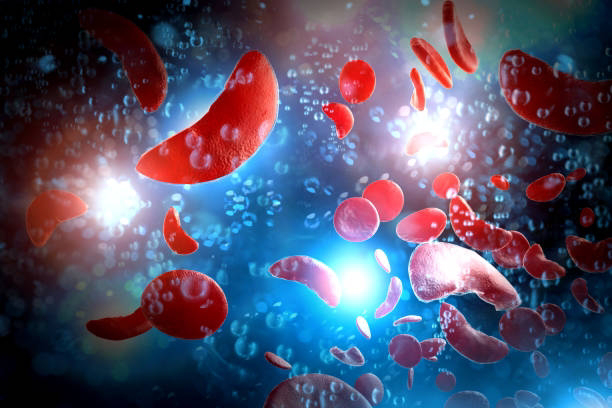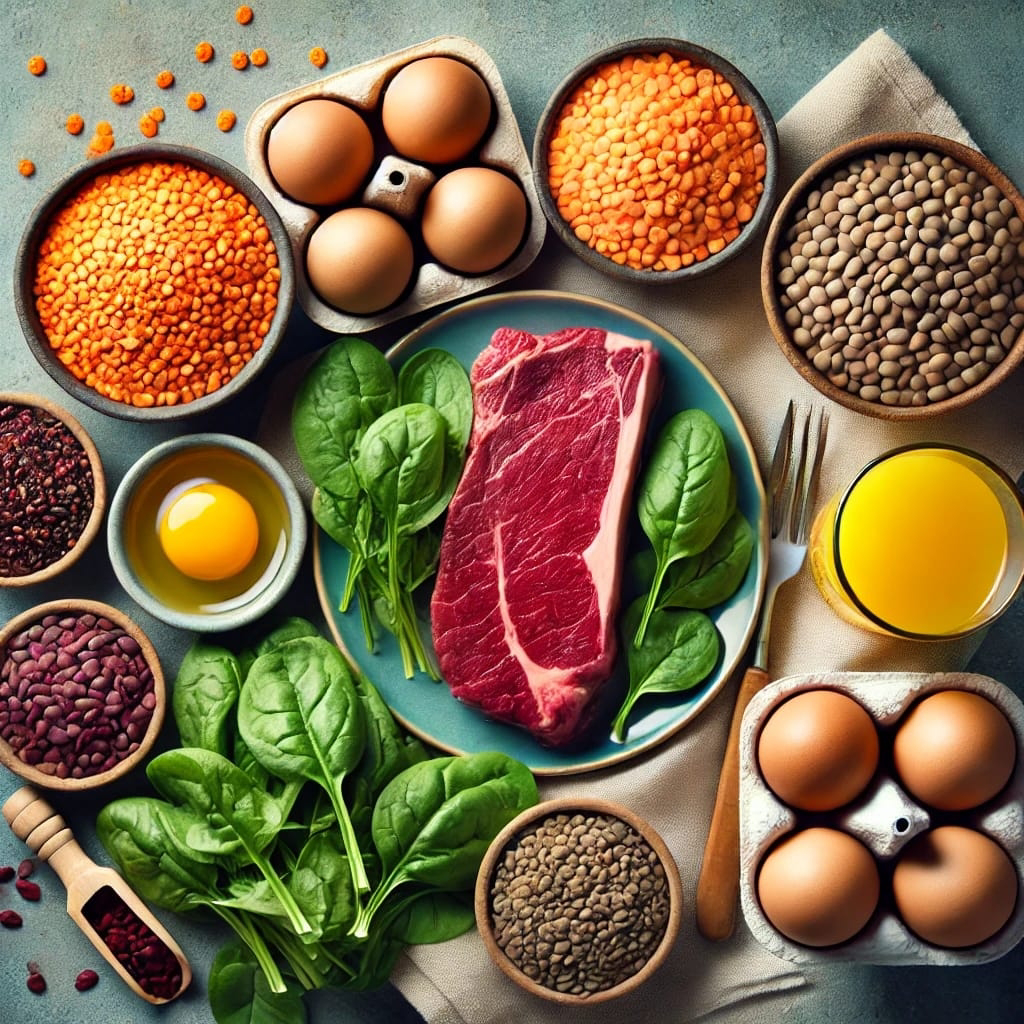ANEMIA: Understanding the Silent Energy Thief
1. Meet Sakshi – A Young Woman Facing Unexplained Fatigue
Sakshi, a 25-year-old engineering professional, was always full of energy. Whether it was meeting tight work deadlines or going out with friends, she never felt slowed down. However, over the past few months, she noticed a troubling change—persistent fatigue. Even after a full night’s sleep, she struggled to get through the day. Climbing just a few stairs left her breathless, and her once-radiant complexion had turned pale.
At first, she dismissed these symptoms as stress or lack of rest. But when she began experiencing frequent dizziness, Sakshi realized something was wrong. She decided to visit a doctor to get to the root of the problem.
2. What’s Happening Inside the Body?
Sakshi’s doctor suspected anemia, a condition where the blood lacks enough healthy red blood cells (RBCs) to carry oxygen efficiently. Imagine red blood cells as tiny delivery trucks transporting oxygen to various parts of the body. When there aren’t enough of them or they don’t function properly, your body struggles to get the oxygen it needs, leading to fatigue, dizziness, and pale skin—just like what Sakshi was experiencing.
But what was causing her anemia? The doctor explained that anemia isn’t a single disease but a group of conditions, each with different causes and effects.
3. Different Types of Anemia: The Culprits
There are various types of anemia, each caused by different factors. Here’s a breakdown of the most common types:
3.1 Iron-Deficiency Anemia – The Most Common Type
•Cause: Low iron levels due to a poor diet, heavy menstrual cycles, or internal bleeding (e.g., ulcers).
•Symptoms:
✓Fatigue
✓Brittle nails
✓Hair loss
✓Cold hands and feet
✓Unusual cravings for non-food items (like ice, dirt, or chalk), a condition known as pica
3.2 Vitamin-Deficiency Anemia – When Nutrition Falls Short
Cause: Low levels of vitamin B12 or folate, often due to poor diet or absorption issues.
•Symptoms:
✓Nerve problems (tingling in hands and feet)
✓Memory issues
✓Irritability
✓Depression
•At Risk: Vegetarians and people with conditions like pernicious anemia, where the body can’t absorb vitamin B12 properly.
3.3 Hemolytic Anemia – When the Body Destroys Its Own Cells
•Cause: Autoimmune diseases, infections, or genetic disorders like G6PD deficiency.
•Symptoms:
✓Jaundice (yellowing of the skin and eyes)
✓Dark-colored urine
✓Enlarged spleen
✓General weakness
3.4 Aplastic Anemia – When the Bone Marrow Shuts Down
•Cause: Exposure to toxic chemicals, viral infections, or autoimmune diseases.
✓Symptoms:
✓Easy bruising
✓Frequent infections
✓Severe fatigue due to the body’s inability to produce new blood cells
3.5 Sickle Cell Anemia – A Genetic Battle
•Cause: An inherited condition where red blood cells become sickle-shaped, causing blockages in blood flow.
•Symptoms:
✓Extreme pain episodes
✓Swelling in hands and feet
✓Long-term organ damage due to poor circulation
4. How Sakshi Discovered Her Anemia
•Did You Know?
One of the most common tests for diagnosing anemia is the Complete Blood Count (CBC), which measures hemoglobin levels and red blood cell counts.
Sakshi’s doctor ordered a CBC test, which revealed low hemoglobin levels. To determine the exact cause, additional tests were conducted to check her iron, vitamin B12, and folate levels. The results confirmed that she had iron-deficiency anemia, likely due to heavy menstrual cycles and a lack of iron-rich foods in her diet.
Now that the problem was identified, the next step was treatment and recovery.
5. The Road to Recovery
Anemia treatment depends on its underlying cause. Here’s how different types are managed:
5.1 Iron-Rich Diet & Supplements
•Diet Tips: Incorporate iron-rich foods like:
•Dark leafy greens (spinach, kale)
•Red meat and poultry
•Lentils and chickpeas
•Fortified cereals and whole grains
Pro Tip: Vitamin C enhances iron absorption! Pair iron-rich foods with vitamin C sources like oranges, bell peppers, and tomatoes for better results.
5.2 Vitamin B12 and Folate Supplements
•Who Needs Them?
✓People with pernicious anemia (who can’t absorb B12)
✓Strict vegetarians or vegans who don’t get enough B12 from plant-based foods
5.3 Medical Interventions for Severe Cases
•Blood Transfusions: For conditions like aplastic anemia or sickle cell crises, where the body isn’t producing enough healthy blood cells.
•Erythropoietin Injections: This medication stimulates the bone marrow to produce more red blood cells, often used for anemia related to kidney disease.
5.4 Addressing Underlying Causes
•Holistic Approach: If anemia is due to chronic conditions (e.g., kidney disease, autoimmune disorders), treating the root cause is essential for long-term recovery.
6. FAQs: Answering Your Questions
Q1: What are the first signs of anemia?
A1: Common early symptoms include unexplained fatigue, dizziness, pale skin, and shortness of breath.
Q2: How can I naturally boost my iron levels?
A2: Eat iron-rich foods like red meat, spinach, lentils, and eggs.
Pair with vitamin C (e.g., oranges, strawberries) for better iron absorption.
Avoid drinking tea/coffee with meals, as they can reduce iron absorption.
Q3: When should I consult a doctor about potential anemia?
A3: If you experience persistent fatigue, dizziness, paleness, or a significant drop in energy levels, see a doctor. Early diagnosis can prevent complications.
Final Thoughts
Anemia is one of the most common yet often overlooked conditions. While it can drain your energy and impact daily life, it is highly treatable with the right diagnosis, diet, and medical care.
Sakshi’s journey highlights the importance of listening to your body and seeking medical advice when something feels off. Whether through nutrition, supplements, or medical treatments, taking proactive steps can help you reclaim your vitality and well-being.
Have you ever experienced anemia or know someone who has? Share your thoughts and experiences in the comments below.
Note: This article is for informational purposes only and should not replace professional medical advice. Consult with a healthcare provider for personalized recommendations.



Comments
Post a Comment